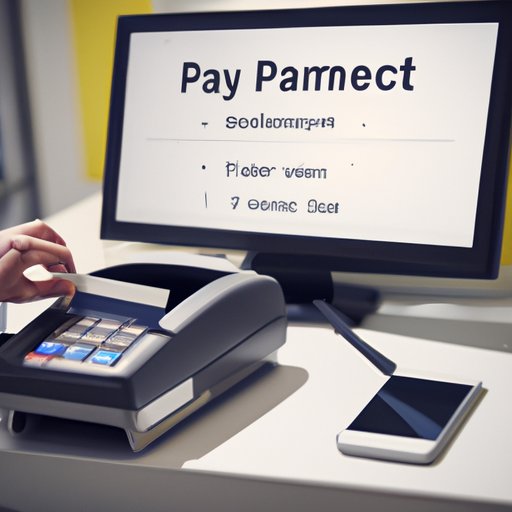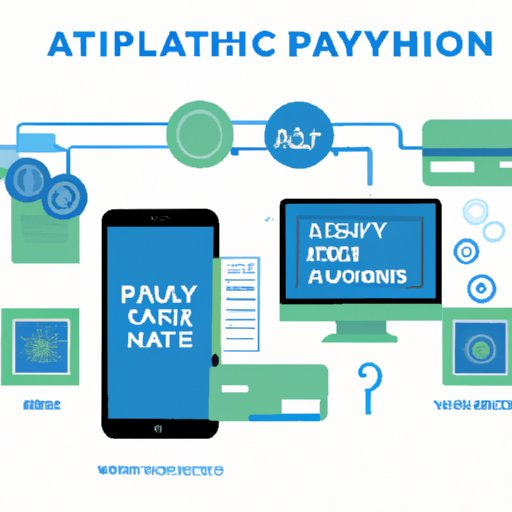Introduction
Automated payments are a method of making payments electronically without manual intervention. They are designed to streamline the payment process, saving time and money while increasing accuracy, security and convenience. In this guide, we’ll explore how businesses can automate their payments, the types of automated payment solutions available, use cases, advantages and tips on setting up an automated payment system.
Types of Automated Payment Solutions
Businesses have several options when it comes to automating payments. Some of the most popular include:
Online Platforms
Online platforms such as PayPal, Stripe and Square are among the most popular methods of automating payments. They allow businesses to accept payments from customers quickly and conveniently, and provide a secure, easy-to-use interface for customers. Online platforms are typically integrated with other business systems, such as accounting or customer relationship management (CRM) software, to further streamline the payment process.
Credit/Debit Card Processing
Credit and debit card processing is another popular option for businesses looking to automate payments. It allows customers to pay with their cards quickly and securely, and provides businesses with an efficient and reliable way to accept payments. Credit and debit card processing is often integrated with other business systems, such as accounting or CRM software, to further streamline the payment process.
ACH Payments
Automated Clearing House (ACH) payments are a type of electronic payment that is processed through the Federal Reserve Bank. ACH payments are a popular option for businesses looking to automate payments, as they are secure, cost-effective and provide a faster turnaround time than traditional paper checks. ACH payments can be integrated with other business systems, such as accounting or CRM software, to further streamline the payment process.
Mobile Payments
Mobile payments are becoming increasingly popular as more businesses offer them as a payment option. Mobile payments allow customers to pay with their smartphones or other mobile devices quickly and securely. Mobile payments are typically integrated with other business systems, such as accounting or CRM software, to further streamline the payment process.
Use Cases
Automated payments can be used in a variety of ways, depending on the needs of the business. Here are some examples of how businesses are using automated payment solutions:
Accounts Receivable Management
Many businesses use automated payments to manage their accounts receivable. Automated payments make it easier to track payments, send invoices and ensure that customers are paying on time. This helps businesses to stay on top of their finances and reduce the amount of time they spend managing accounts receivable.
Subscription Services
Subscription services, such as streaming video or music platforms, often use automated payments to manage customer subscriptions. Automated payments make it easier for customers to pay for their subscriptions, and help businesses to keep track of subscription renewals and cancellations. This helps businesses to ensure that they are providing a seamless customer experience.
Retail Payments
Retail stores are increasingly using automated payments to make it easier for customers to pay for their purchases. Automated payments make it easier for customers to pay with their credit or debit cards, and provide businesses with an efficient and secure way to accept payments. This helps businesses to improve the customer experience and increase sales.
Advantages of Automating Payments
Automated payments offer several benefits for businesses, including:
Streamlining Financial Operations
Automated payments make it easier for businesses to manage their financial operations. By automating payments, businesses can reduce the amount of time they spend on manual tasks such as reconciling accounts and sending invoices. This helps businesses to save time and money, and focus their resources on more important tasks.
Improved Security & Reduced Risk
Automated payments also offer improved security and reduced risk. By automating payments, businesses can reduce the risk of fraud and errors, and ensure that payments are processed securely. This helps businesses to protect their customers’ data and reduce the likelihood of payment disputes.

Setting Up Automated Payment Systems
When setting up an automated payment system, there are several factors that businesses should consider. Here are some guidelines and tips for setting up an automated payment system:
Choose the Right Solution
The first step in setting up an automated payment system is to choose the right solution for your business. Consider the types of payments you need to accept and the features you need, and select a solution that meets your needs.
Integrate with Other Business Systems
Integrating your automated payment system with other business systems, such as accounting or CRM software, can help to streamline the payment process. This can save time and money, and help to ensure that payments are processed accurately and securely.
Test & Monitor
Once your automated payment system is set up, it’s important to test it and monitor it regularly. This will help to ensure that the system is working properly and that payments are being processed correctly.
Conclusion
Automated payments offer a number of benefits for businesses, including streamlined financial operations, improved security and reduced risk. When setting up an automated payment system, it’s important to choose the right solution, integrate with other business systems and test and monitor the system regularly. By taking these steps, businesses can ensure that their automated payment system is secure and efficient.
(Note: Is this article not meeting your expectations? Do you have knowledge or insights to share? Unlock new opportunities and expand your reach by joining our authors team. Click Registration to join us and share your expertise with our readers.)
